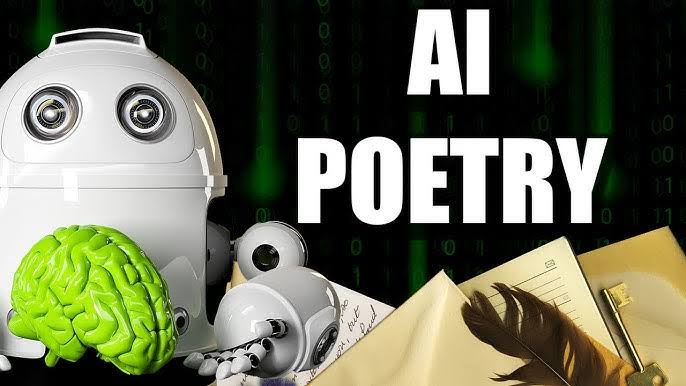Explore the impact of AI on poetry and literature, and discover how language models are transforming creative expression. Learn about the potential and challenges of AI-generated content, and how it influences the future of writing and storytelling.
In recent years intersection of artificial intelligence (AI) and creative arts has sparked significant interest and debate. One of most intriguing developments in this realm is emergence of AI-generated poetry and literature. Language models powered by advanced machine learning techniques are capable of producing written content that resembles human creativity. This article delves into creative potential of AI in generating poetry and literature. It examines implications, capabilities. It also considers broader impact on literary world
Understanding AI Language Models
At core of AI-generated poetry and literature are language models. These are sophisticated algorithms designed to understand and generate human-like text. Models are trained on vast amounts of text data. This enables them to learn patterns structures and styles of language. Training process involves feeding model with diverse examples of written content. This allows it to predict and generate text based on patterns learned.
One notable example of such language model is GPT-3 (Generative Pre-trained Transformer 3), developed by OpenAI. GPT-3 is known for its ability to generate coherent and contextually relevant text based on given prompt. Advanced capabilities have led to use in various creative applications including poetry and literature. By leveraging model's extensive training data and predictive power, it is possible to generate text that mimics different literary styles and genres.
The Creative Potential of AI-Generated Poetry
AI-generated poetry represents fascinating exploration of creativity and language. Traditional poetry often relies on unique perspective and emotional depth of human poets. However AI models, despite lacking consciousness and emotional experiences can produce poetry that resonates with readers on various levels. These models generate poems that adhere to traditional poetic forms, such as sonnets and haikus. They also create experimental and free verse styles.
One key advantage of AI-generated poetry is its ability to explore novel combinations of words and phrases. By processing extensive datasets AI models uncover unconventional patterns. They generate unexpected linguistic combinations. This can result in poetry that challenges traditional notions of coherence and meaning. It offers readers fresh perspectives and interpretations. Additionally, AI-generated poetry can be customized to align with specific themes or styles. This allows for tailored creative expressions.
Despite its innovative potential AI-generated poetry raises questions about authorship and originality. While text may be generated by algorithm, creative input and intent behind work derive from training data and prompts provided by human users. This interplay between human input and machine-generated output highlights collaborative nature of AI-assisted creativity.
AI in Literature: Crafting Stories and Narratives
Application of AI in literature extends beyond poetry to realm of storytelling and narrative creation. Language models like GPT-3 demonstrate capability to generate coherent and engaging stories. These range from short fiction to longer narratives. Models produce stories based on specific genres themes or prompts. This allows for diverse and imaginative storytelling possibilities
One significant advantage of AI in literature is its ability to generate content rapidly. Writers and content creators can use AI to brainstorm ideas. They can develop plotlines or overcome writer's block. By inputting prompt or a few sentences users can receive suggestions or complete passages that can serve as foundation for further development. This can be particularly valuable for authors looking to explore new narrative directions or experiment with different writing styles.
Moreover, AI-generated literature can be used to create interactive and personalized reading experiences. For example AI models can be employed to generate personalized stories based on individual preferences or input from readers. This approach has potential to revolutionize interactive fiction. It allows readers to influence direction of narrative and engage with dynamic storytelling.
Ethical Considerations and Challenges
While creative potential of AI-generated poetry and literature is exciting it also raises several ethical considerations and challenges. One major concern is question of authorship and intellectual property. When AI generates text based on existing literary works, it may inadvertently replicate or mimic style of human authors. This raises questions about ownership and originality of generated content. Whether it constitutes a form of plagiarism is also a concern
Additionally there is challenge of ensuring that AI-generated content adheres to ethical and cultural standards. Language models can sometimes produce text that reflects biases or stereotypes present in training data. This highlights importance of careful monitoring and oversight in use of AI for creative purposes. It is crucial to prevent perpetuation of harmful or offensive content
The Role of Human Creativity in AI-Assisted Work
Despite impressive capabilities of AI in generating poetry and literature it is essential to recognize ongoing role of human creativity in creative process. AI models can assist and augment human creativity. However, they do not replace unique insights emotions and perspectives that human authors bring to their work. The interplay between human input and AI-generated output can lead to innovative and compelling creative expressions. Ultimately, it is human touch that shapes and refines final product.
As AI continues to evolve and integrate into creative arts it is crucial to embrace collaborative approach that leverages strengths of both human and machine creativity. By using AI as tool for inspiration, exploration and experimentation writers and poets can push boundaries of traditional literary forms. They can discover new avenues for artistic expression
